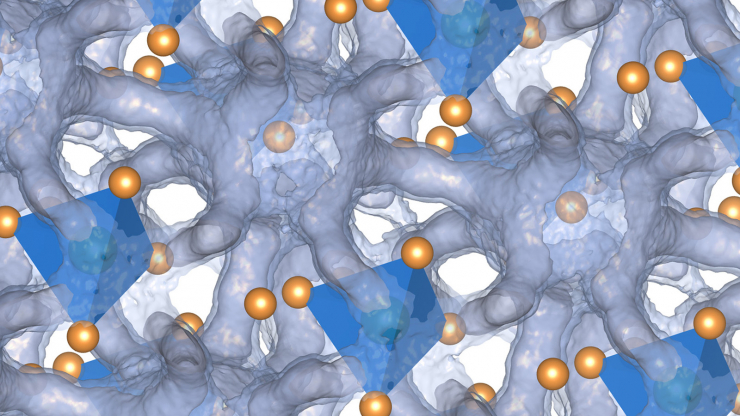Solid state batteries are expected to be one of the next big things in electrification, and one set of researchers say they could have unlocked a key reason why the latest hot class of compounds actually work.
Solid state battery researchers are extremely excited about a group of silver-containing minerals known as argyrodites because they are an excellent lithium-ion superconductor, and they’re cheap, and work well at room temperature.
By using machine learning and experimental spectroscopy, a team of researchers from Australia, France, Germany, China, Japan, India and the US figured out why argyrodites, and specifically a recipe made of silver, tin and selenium, work as solid state battery electrolytes.
In a study published in Nature, the team hit the compound with neutrons and x-rays to discover how the molecules behave in real time. A collaborator at the Bhabha Atomic Research Center in India developed a computational model to make sense of the data.
What they found was as expected the tin and selenium atoms create a stable scaffolding through which the silver atoms move freely. However, they also found the structure flexes to let the silver atoms through.
“It’s sort of like the silver atoms are marbles rattling around about the bottom of a very shallow well, moving about like the crystalline scaffold isn’t solid,” said Olivier Delaire, associate professor of mechanical engineering and materials science at Duke University and one of the authors of the paper.
“That duality of a material living between both a liquid and solid state is what I found most surprising.”
This research was partially funded by the Australian Research Council thanks to its links with two researchers from the University of Wollongong’s Institute for Superconducting & Electronic Materials (ISEM), Jianli Wang and Zhenxiang Cheng.
Argyrodites are not the only exciting arena in solid state batteries. Other research is focusing on using ceramic solid electrolytes and on using silicon not only as the energy-dense anode but as the electrolyte too.
Not just EV makers
Car makers expect solid state batteries to enter the electric vehicle (EV) world by 2025, but the first residential battery might be already on its way: Amptricity in the US says it will start delivering in the third quarter this year what it says is the world’s first solid state home battery.
Furthermore, energy companies are eyeing the technology for stationary storage.
In June 2022, Spanish energy company Iberdrola bought a stake in Basque solid state storage company Basquevolt, saying “liquid electrolyte lithium batteries are reaching maturity and that the next technological breakthrough to truly unlock the true potential of energy storage must come from the solid state”
Basquevolt plans to have prototype cells and a pilot line in play by 2025 and commercial production in 2027.
Solid state batteries are particularly exciting because they are more energy dense than the current electrolyte-based lithium-ion batteries, meaning they can be smaller, weigh less, and — in theory — aren’t prone to catching fire and exploding.
Projections by battery makers such as Samsung suggest a 15 minute recharge time to 80 per cent, mileage of 800km on a single charge, and a charge-discharge lifetime of as much as 10,000 cycles, according to one Harvard study.
The benefits, if solid state batteries can be made to work at scale and as expected, are likely to be felt most in hard-to-electrify areas such as air vehicles such as drones and maybe even planes, long distance haulage where batteries are too big yet hydrogen too expensive to use.
Currently, Toyota, Hyundai, BMW, Ford, GM, Volkswagen are working on solid state EV battery technologies.
Pros and cons
Today’s lithium-ion batteries are made up of an anode and a cathode in a liquid electrolyte that are kept separate to keep the system stable.
The risks are if that separator is punctured, which could be via an external force like a car crash, or the lithium metal forming stalagmite-like formations that can punch through.
Solid state batteries fix this problem by removing the liquid electrolyte. But by also using pure lithium, rather than a lithium-infused graphite, as one of the electrodes it is also much more energy dense.
Although tiny solid state batteries, such as in phones and watches, are the norm today, scaling them up in size has proved technically tricky and very expensive.
One problem is the instability at the edges of the electrodes and the solid electrolyte radically shortens a solid state battery lifetime. Some researchers, such as those at Honda, are trying different coatings between the layers, but this adds yet more cost and time.








